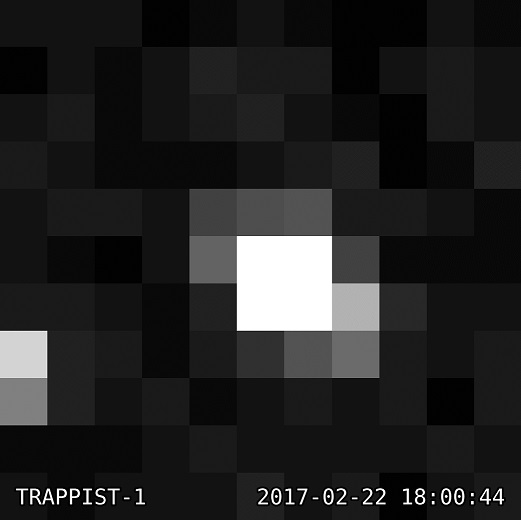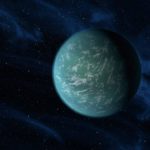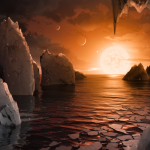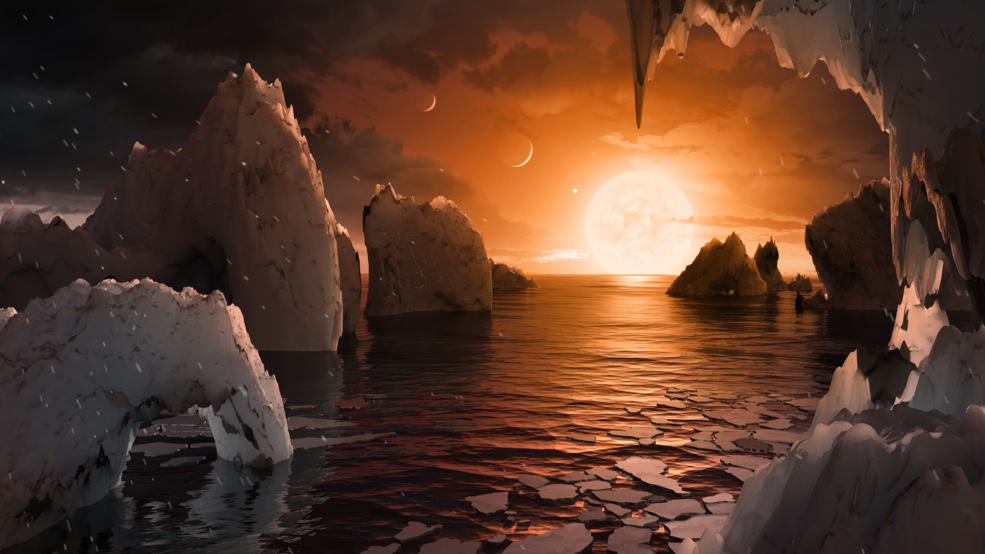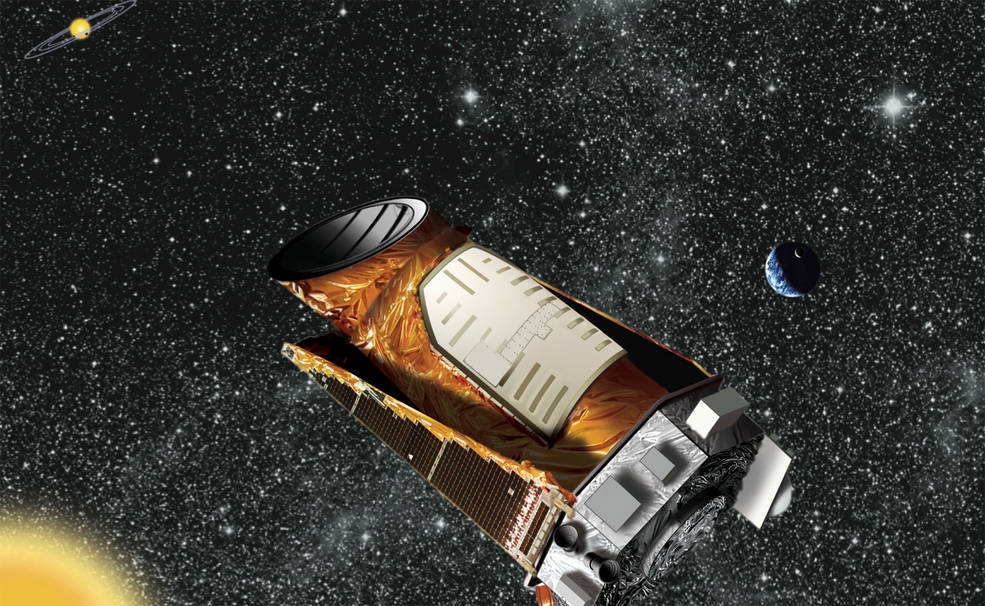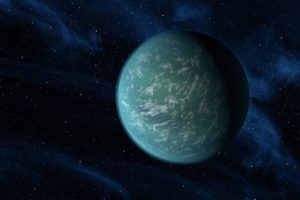オリジナル記事:Light From An Ultra-Cool Neighbor
This animation shows the amount of light detected by each pixel in a small section of the camera onboard NASA’s Kepler space telescope. The light collected from TRAPPIST-1, an ultra-cool dwarf star approximately 40 light-years from Earth, is at the center of the image. Not directly visible in the movie are the seven Earth-size planets that orbit TRAPPIST-1.
このGIF動画(最下に貼付)は、NASAのケプラー宇宙望遠鏡に搭載されたカメラの各ピクセルで検出された光の量を示しています。 トラピスト-1(地球から約40光年離れた超低温の恒星)から集められた光が画像の中心にあります。 トラピスト-1を周回する7つの地球サイズの惑星はこの中では直接見ることはできません。
Kepler detects a change in brightness when a planet passes in front of a star from the vantage point of the telescope. Transiting planets block a tiny fraction of starlight that produces miniscule dips in the brightness of their host star. An Earth-size planet passing in front of a small ultra-cool dwarf star like TRAPPIST-1 creates less than a one percent dip in brightness, and is not visible with the naked eye.
ケプラー宇宙望遠では、天体が恒星の前を通過するときの明るさの変化を検出することができます。恒星の前を通過する惑星は、恒星からの光の一部を遮蔽することになりますので恒星の明るさがわずかに減少するのです。 トラピスト-1のような小さな超矮小星の前を地球サイズの惑星が通過する際は、明るさの変化が1%以下なので、その変化を肉眼でとらえることはできません。
Astronomers use sophisticated algorithms to search the data for these dips in brightness, and in particular, to correct for the spacecraft’s small movements in space—this is the ‘flickering’ of the pixels seen in the movie.
天文学者は高度なアルゴリズムにより、特に宇宙空間で、動画の中のピクセルの「ちらつき」である移動物体の微小な動きを明るさの変化から探し出すことができます。
During the period of Dec. 15, 2016 and March 4, the Kepler spacecraft, operating as the K2 mission, observed TRAPPIST-1 for 74 days. This animation shows 60 brightness measurements or photos taken by Kepler’s onboard camera once a minute for an hour on February 22. Called a target pixel file, the image covers an area of 11 square pixels or 44 square arcseconds of the sky. This area is equivalent in size to holding up a grain of sand at arms length towards the sky.
2016年12月15日から3月4日にかけて、K2ミッションとして活動していたケプラー宇宙船はトラピスト-1を74日間観測しました。このGIF動画は、2月22日に1時間に1度ケプラー搭載のカメラで撮影された60の輝度測定値から作られています。ターゲットピクセルファイルと呼ばれる画像は、11平方ピクセルまたは44平方秒角の宇宙空間をカバーしています。この空間は空に向かって腕を伸ばして1粒の砂を見るのと同じ大きさです。
Credit: NASA Ames/G. Barentsen
Last Updated: March 11, 2017
Editor: Michele Johnson
訳者注:
以下がNASAが公開したトラピストからの光のGIF動画です。

